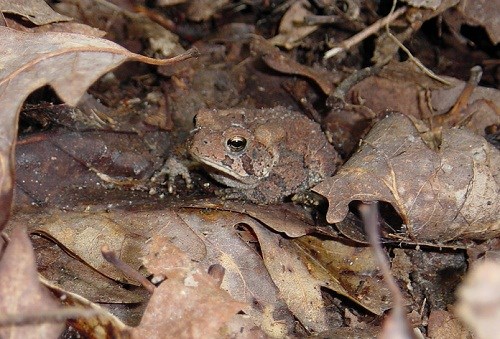
NPS An estimated 29 species of Amphibians, from the orders Caudata (Salamanders) and Anura (Frogs and Toads), exist within the borders of Buffalo National River. Efforts to locate and document all of the amphibian species, and discover new species, are currently underway. Since amphibians, with some exceptions, require a watery environment to reproduce, most of these species can be found in and near the river's edge. Some ephemeral aquatic habitats may be found high on the mountaintops creating a unique environment resembling a lowland environment found in other ecoregions of Arkansas. These habitats exist only in spring so that species which rely on them for reproduction must act very quickly. Toads are not required to have hydrated skin to supplement respiration. They tend to range further from the mesic conditions required by their close relatives, the frogs. 
NPS A spreadsheet of the amphibians and reptiles in the park is available here. This spreadsheet indicates the relative abundance of each species. Most resident species of amphibians are relatively abundant. The habitats associated with karst features are an intricate part of the river and are fundamentally important to special requirements of many species of amphibians. The ringed salamander, grotto salamander, and wood frog are recognized by the Arkansas Game & Fish Commission as species in need of special protection. At present the leading causes for concern in the Buffalo River Watershed are extraction of forest products, chemical applications to surrounding agricultural developments, and the siltation and pollution associated with those practices.
Amphibian Checklist
|
Last updated: December 11, 2017
